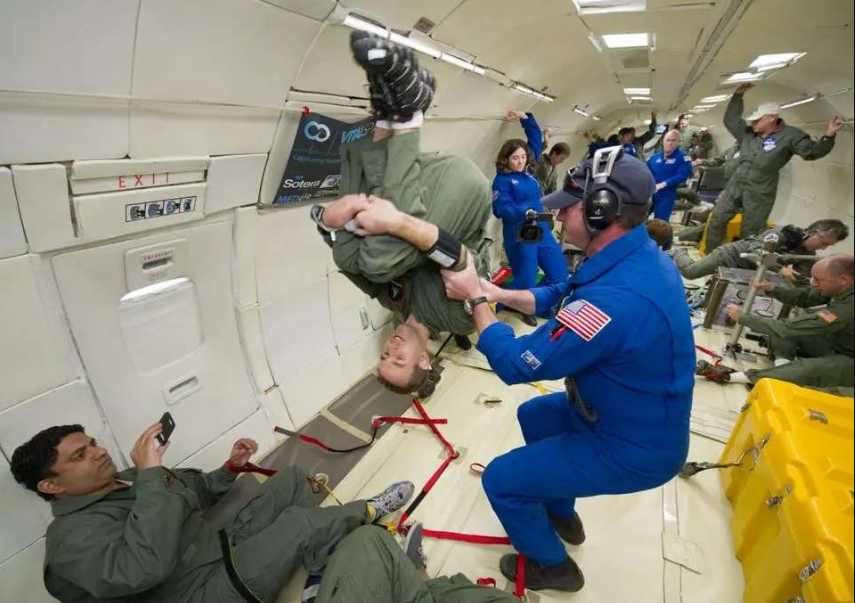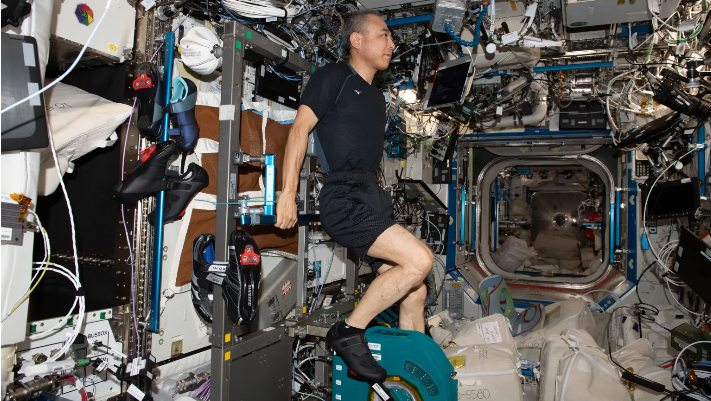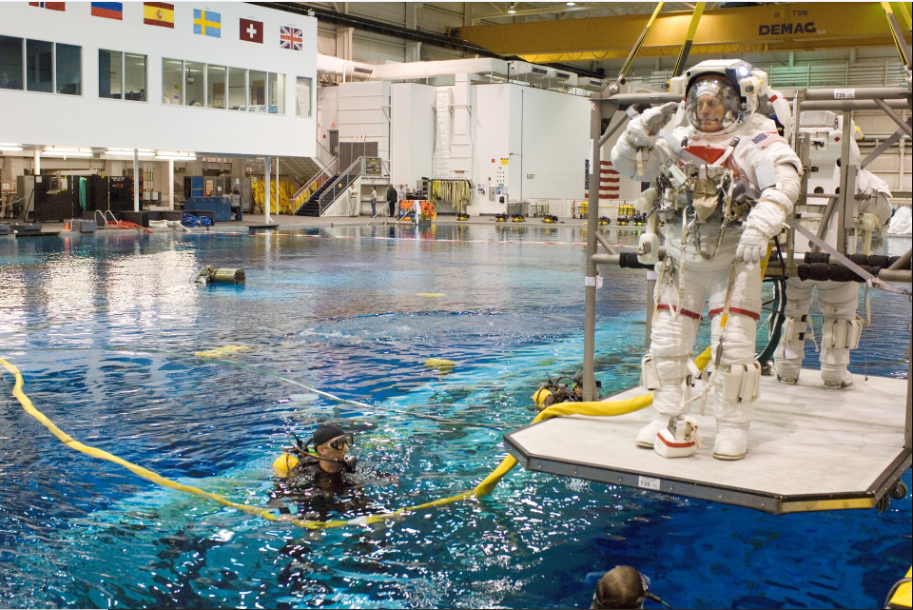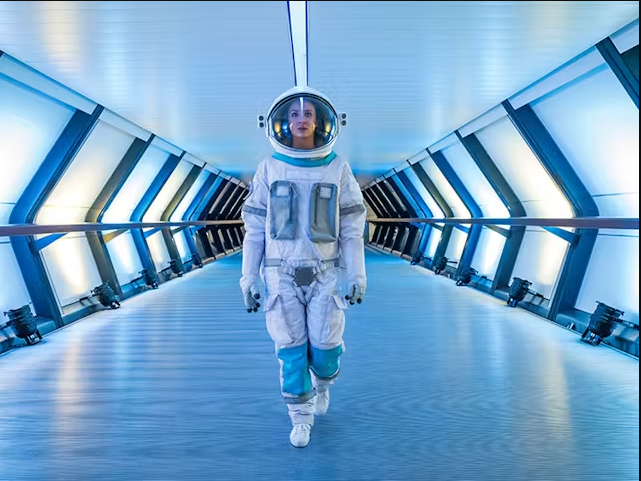How Do Astronauts Train for Space?
Looking for a trip to space? You need special training for space in space suits, scuba diving, and land and sea survival training to go to space. Since the first American human space mission in 1961, man's fascination with space travel has expanded. The world and NASA have gained a great deal of knowledge about how people and spacecraft technology work in space.
Before, during, and after their space missions, astronauts in various parts of the world undergo a complex process known as astronaut training. As an astronaut, you will undergo special space training, including medical examinations, physical training, extravehicular activity (EVA) training, wilderness and water survival training, robotics training, procedure training, rehabilitation, and training on research they will conduct while in space.
If you are a commercial astronaut, you will undergo less rigorous training with more focus on delivering safe and entertaining flight experiences as compared to government-sponsored astronauts. This article will explain everything you need to know about astronaut training, its phases, and interesting facts about zero gravity.

What is Astronaut Training Called?
NASA astronaut training consists of three main phases:
Basic training
As astronaut candidates (AsCans), you will undergo a year of basic training at astronaut training centers as soon as you are selected. Firstly, you will get training about the basics of many different technical and scientific fields and knowledge of aerospace organizations and their primary space programs. Basic training is necessary for certain International Space Station (ISS) duties, including robotics, spaceship rendezvous and docking, extravehicular activities (spacewalks), and more. After completion of the first phase, you will get the knowledge of survival skills, human behavior and performance training, and Russian language instruction.
Pre-assignment Training
The next and harder phase of your astronaut space training is pre-assignment training. AsCans from all International Space Station partners, NASA (USA), Roscosmos (Russia), ESA (Europe), JAXA (Japan), and CSA (Canada), will gain the technical expertise. These comprehensive skills are necessary for you to operate, service, and sustain the station's modules, systems, payloads, and vehicle transportation. You will be specialized in some areas of space training, including payloads, medical issues, robotics, navigation, repair, resource and data operations, and spacewalks after completion of this training.
Increment training
The last phase of NASA’s astronaut training will teach you the scientific basis of the experiment as well as how to use the research apparatus. Along with fixing malfunctioning parts, you will get ready to operate the spacecraft components. The mission training is completed by rigorous training for the staff, the transport vehicle, secure onboard living, and emergency responses.
Height Requirement for Astronauts in Feet
- You must be no more than 6 feet 4 inches (193 cm) tall to enroll for astronaut training
- A minimum of 4 feet 10.5 inches (149 cm) in height is required.
- The minimum height requirement for pilots is 5 feet 4 inches (163 cm).
Why Do Astronauts Travel to Space?
Astronaut simulation training helps you travel to space so that you, as an astronaut, can:
- observe Earth and the rest of the solar system from a different angle
- study the cosmos in its natural condition and collect information about celestial bodies
- travel into space to carry out scientific investigations and collect information about the universe
- research the impact of microgravity on human beings
How Do Astronauts Train to Go to Space?
Once you are qualified as AsCans, you will go through one of the most competitive selection procedures in the world at Johnson Space Center. After completing around two years of rigorous astronaut training, you can start specialized mission training. Along with a range of other subjects such as Earth sciences, meteorology, space science, and engineering, you will also receive training in shuttle and space station technologies.
Water Survival Training
Before starting your flight lessons, you must finish the military water survival requirements of the astronaut training program and must clear a swimming test. You must achieve your SCUBA certification to get ready for the extravehicular activity program.
Microgravity and Air Pressure Training
You can then learn how to handle situations related to high (hyperbaric) and low (hypobaric) air pressures in the altitude chambers. Astronaut training also includes exposure to the microgravity of space travel.
Mission Training
After completing the candidate training phase, you are assigned to a mission and placed in training groups with more experienced astronauts.
Astronaut Categorization
You can be any of the following astronauts of the space training program:
- As pilot astronauts, you are responsible for flying the shuttle and directing missions
- If you are among mission specialists and flight engineers, your tasks are conducting spacewalks, handling robots, and doing science experiments.
- The upcoming educator astronauts from Johnson Space Center will introduce you to the next wave of adventurers to the thrill of human spaceflight.

What Kind of Physical Training Do Astronauts Do?
The integration of virtual and physical facilities has helped astronauts to get used to the circumstances they would face in their space journey and microgravity. The Apollo astronauts' training includes geological excavations on the lunar surface. It considers particular factors to guarantee a secure and productive mission. NASA astronaut training allows you to regularly work out and engage in strength training prior to, during, and following a mission to maintain strong bones and muscles. It can be done by engaging in multi-joint weight-bearing activities, including the squat for lower-body strength and the push-up for upper-body strength.
How Do Astronauts Train for Zero Gravity?
There is currently no technique to accurately replicate microgravity for extended periods of time on Earth. However, astronaut training programs offer you the experience of weightlessness to anticipate space travel at neutral buoyancy laboratories and parabolic planes. Microgravity may be produced for up to 22 seconds at a time. One aircraft can achieve complete weightlessness for up to 12 minutes by continuing the maneuver.
How Do Astronauts Work Out in Space?
Astronaut training experience helps astronauts to work out and mimic Earth-like exercises. Previously, astronauts did workouts for a long duration and at a low potency. The practices were resistance exercise and treadmills. At the International Space Station (ISS), modern and space-specialized workout apparatus like weightlifting machines, stationary cycles, and treadmills like COLBERT are used. These machines are designed especially for space to maintain the muscle-bone density of astronauts while stimulating the gravity and walking stresses.

How Hard is Astronaut Training?
Training for space is a demanding two-year program that includes both academic coursework and practical assessments. Learning Russian is essential for you if you want to work aboard the International Space Station (ISS) to interact with the Russian Mission Control Center.
How Long is Astronaut Training?
Astronauts must finish two years of required basic astronaut training in addition to six years of education and two years of professional experience. It may take around ten years of planning. You could have to wait months or even years to go on your first space flight after completion of your training.
Do Astronauts Sleep in Zero Gravity?
The neutral buoyancy lab helps astronauts to sleep in tiny sleeping chambers using sleeping bags. Their bodies are lightly strapped to prevent them from floating. There are no "ups" and "downs" in the zero-gravity environment, so they can sleep in any position and in any direction. Their neutral body position in space is imitated via zero-gravity sleep.
How Do Astronauts Pee in Zero Gravity?
Astronauts get trained for zero gravity during their astronaut training. There are several footholds and handholds in the restroom to prevent astronauts from falling off. They can grab the hose and funnel firmly against their skin to prevent any leaks as they sit or stand to urinate. Astronauts sit on the seat and lift the toilet cover to defecate like on Earth.
What Type of Training Do Astronauts Undergo Before Going to Space?
You must complete up to two years of astronaut training after the selection process in order to become fully certified astronauts. You must first complete basic training to acquire soft and technical skills. There are sixteen distinct technical courses available in
- Life support systems
- Orbital mechanics
- Payload deployment
- Earth observations
- Medicine and space physiology
Basic Astronaut Space Training
There is basic astronaut training where you will learn about the instruction in ISS and Soyuz technologies, flight operations and safety, and land and sea survival. NASA’s T-38 Trainer Jet will be used to teach you as pilot AsCans.
Advanced Astronaut Training
You will move on to NASA's Advanced Training after completing Basic Space Training. Life-sized replicas are used so you may experience what you will be doing in space. Simulation mock-ups as well as the Shuttle Training Aircraft are used here.
Intensive Training
Intensive training is the last stage of your astronaut training. You are prepared for your designated mission around three months before launch. Mission planning is conducted concurrently with the final intensive training combined crew/flight controller training.
During the intensive training stage, you will get operational training. Astronaut space training for crew medical officers is provided so you may properly engage with both preventative and reactive activities during medical difficulties.

How is Astronaut Training for Kids?
If you are a kid who wants to go to space, there is NASA astronaut training for kids. It has three primary components:
- You must first complete a year of basic training to be eligible to become astronauts. You will gain knowledge of fundamental medical procedures, scuba diving, space science and technology, and the operation of the ISS during kids' astronaut training. Additionally, you learn about scuba diving.
- The next phase will teach you numerous components of the ISS, the experiments and transport vehicles, and the role of ground control.
- After that, you may be put on a mission. You will be trained in unique duties associated with your space task by collaborating with the other crew members. This part of astronaut training for kids comprises the experience of weightlessness.
How to Prepare for a Trip to Space?
If you want a trip to space, you need to get special astronaut training. Here are some important points:
- You need to qualify for astronaut training programs and engage in weightlessness simulations to face microgravity environment of space
- Your training to be an astronaut will include swimming pool dive to practice spacewalks and operate pressurized spacesuits
- You must undergo space survival training and develop coping mechanisms in the event of a rescue landing back on Earth in the ocean or in extremely cold places like Siberia
- You need to learn how to control the robotic arm to collect cargo ships as space mission astronaut
- You must appear in an extra 18 months of mission-specific training after being assigned to a flight
- You must learn to mimic space emergency protocols and a variety of mission situations, including launch, rendezvous, and docking
- You must have in-depth instruction on how to manage data, collect samples, and operate scientific research equipment during your astronaut training

Final Thoughts
Astronaut training is always improving in response to mission objectives and technological advancements. Augmented and virtual reality (AVR) are examples of new remote training formats to enhance the learning engagement. Spaceflight training will surely continue to change as more people go into space on a wider variety of flight vehicles and for different kinds of missions. Investigating ways to keep people healthy and secure in space is an exciting moment. Researchers are excited to make human space travel possible!

Be the first to write a review!